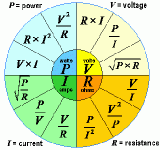Vo (rms peak)=square root of 100 times 8 or 28.28 RMS volts peak or 56.57 peak to peak rms.
No, that's square root or 100 times 16
P= (Vo / 1.414) * (Vo/ 1.414) /Rload
P= (Vo x Vo) /2Rload (this is the formula to remember)
Which gives 40V for 100W
Last edited:
56.57 peak to peak rms
I think we want to avoid the phrase "peak to peak rms"
It seems you dont understand conceptually what paragraphs are for, it makes for easier digestion of your information if its divided into focused, easily digestible chunks. Making each sentence a different paragraph isnt what i had in mind but its a start.You guys are welcome to correct any spelling and add as many paragraphs as needed, in fact please do so, take an hour or so out of your time. If this is the extent of discussion?
I'm not trying to criticize you, but as youve seen it makes people reluctant to read it and answer, as its hard work to find the message; let alone being actually mentally and visually difficult to understand; I'm only trying to help
You are the one asking for help, if you can make it as easy for people who are wanting to help, to interpret it, then you will find more people willing to do so. Regarding asking others to do that for you, i'm guessing you are just making a 'smart' comment.
i'm glad you are entering into the conversation too and do seem willing, so hopefully the hive can help you with your problem. i'll leave someone else to read that post and give analysis
Nelson Pass said:Assuming 4 volt losses off the rails, +/-36V pk which is about 80 watts rms
into 8 ohms.
dont you mean
Assuming 4 volt losses off the rails, 36V pk which is about 80 watts rms
into 8 ohms.
?
+/-36v pk would be 72v pk to pk, impossible from 22v rails. we know you are thinking the right thing and anyone reading would make that adjustment when reading (which is clearly just a typo), but since we are being pedantic about stating this the right way...
or am i the one having a brain fart here?
Last edited:
or am i the one having a brain fart here?
Could be.
It's about a balanced amp 2x18=36
is the rest of the analysis ok as far as it goes.
Thx to read my short post 161.
I took the time to read your long one and pointed where your mistake is.
NVM...
which is totally correct....
Nelson Pass said:Assuming 4 volt losses off the rails, +/-36V pk which is about 80 watts rms
into 8 ohms.
which is totally correct....
Last edited:
or is +/-36v pk shorthand for 36v peak to peak? if so then i truly do have my dunce hat on.
edit: ahh i do and we are lol wheres that emoticon, i'm sure our jester has one appropriate? please quote me with something appropriate from your unending supply of animated characters ZM. have you got one with a cream pie in the face or something where i get a bucket of something tipped over me?
sorry Nelson, I wasnt meaning anything anyway but still.
I was mentally thinking balanced, but not the dual differential kind where we have +/-18 + +/-18 at the load like we have here
edit: ahh i do and we are lol wheres that emoticon, i'm sure our jester has one appropriate? please quote me with something appropriate from your unending supply of animated characters ZM. have you got one with a cream pie in the face or something where i get a bucket of something tipped over me?
sorry Nelson, I wasnt meaning anything anyway but still.
I was mentally thinking balanced, but not the dual differential kind where we have +/-18 + +/-18 at the load like we have here
Last edited:
36v peak is correct
But +/- 36volts peak clearly refers to a sinus of 72v peak to peak.
I do not see your point.
Or are you splitting semantic hair?
I think ive covered it pretty well in my last post dont you? or are you replying to a previous edit before my light bulb moment?
I was indeed splitting a semantic hair because the idea of the last few pages has been to clarify the whole peak to peak voltage and RMS voltage of the circuit, I stated pretty clearly thats what i was doing almost word for word; I dont know how i could have stated my intentions more clearly actually so that puzzles me you dont see what they were. I was very careful about stating my intentions because of who i was quoting; now its been made a far bigger deal than it was.
man wheres that crucifix?
but I wasnt thinking clearly, having an output that was higher than the rails isnt the first thing that comes to mind. so I couldnt see that +/-36v pk following on from 18v rails could actually be representing 72v pk to pk, because i was thinking of a balanced amp with +/- rails, not a dual differential balanced amp with +/-18 in series with another +/-18v when measured at the output.
Last edited:
When you say "22v rails," I assume +/-22 V supply. With an unbalanced amp, that allows for almost 44 V peak to peak. With a balanced amp, you can achieve 88 V peak to peak (remember, the speaker is not ground referenced, because both terminals are changing voltage).?
+/-36v pk would be 72v pk to pk, impossible from 22v rails. we know you are thinking the right thing and anyone reading would make that adjustment when reading (which is clearly just a typo), but since we are being pedantic about stating this the right way...
or am i the one having a brain fart here?
In other words, I'd say 77 V peak to peak is certainly possible with +/-22 V rails, provided we're talking about a balanced amplifier such as BA-3b.
oh boy
all you succeeded is to confuse me
now I don't even know what I know , let alone what I don't know .....
that's exact reason why I never know what's absolute what's relative offset in Aleph X , just because everyone and another one had to write novel of it ....
(OK - I admit - I'm mixing terms , even if I know ( now - knew ) what's happening at amp's end )
)
now same with the power
that's easy
what's important and not visible from textbooks - is to grasp Vpp from amp's schm , counting losses (read: amp's ability to withstand compression of both voltage and current at said load)
then rest is easy - formulaes for RMS are everywhere
oopsa
time for morning coffee
all you succeeded is to confuse me
now I don't even know what I know , let alone what I don't know .....
that's exact reason why I never know what's absolute what's relative offset in Aleph X , just because everyone and another one had to write novel of it ....

(OK - I admit - I'm mixing terms , even if I know ( now - knew ) what's happening at amp's end
now same with the power
that's easy
what's important and not visible from textbooks - is to grasp Vpp from amp's schm , counting losses (read: amp's ability to withstand compression of both voltage and current at said load)
then rest is easy - formulaes for RMS are everywhere
oopsa
time for morning coffee
Attachments
Last edited:
lets say that PSU have voltage of +/-22V
common ( non bridged ) amp
lets say that squeezable sine is 40Vpp ( looking at (or just thinking of ) sine on scope)
let's say that load is 8R
then Vrms is Vpp/(2x1,41)
them P=Vrms^2/R
Vrms =40/(2x1.41)=14,14V
P= 14,14^2/8=25W
for bridged amp just double Vrms ( or Vpp from start , whatever )
so power for bridged is :
P = 28,28^2/8=100W
let's go party ......... but only after we bridge two bridged amps ..........
so power is ......
sine, so RMS, is (just ) 4 times greater ( or just double doubled )
P=(2x2x14,14Vrms)^2/8R=just 400W
common ( non bridged ) amp
lets say that squeezable sine is 40Vpp ( looking at (or just thinking of ) sine on scope)
let's say that load is 8R
then Vrms is Vpp/(2x1,41)
them P=Vrms^2/R
Vrms =40/(2x1.41)=14,14V
P= 14,14^2/8=25W
for bridged amp just double Vrms ( or Vpp from start , whatever )
so power for bridged is :
P = 28,28^2/8=100W
let's go party ......... but only after we bridge two bridged amps ..........
so power is ......
sine, so RMS, is (just ) 4 times greater ( or just double doubled )
P=(2x2x14,14Vrms)^2/8R=just 400W
Attachments
Jim,Vo(peak rms)=square root of Po times RL.
Po=I squared times RL, and Irms out = square root of Po divided by RL.
So if we have amp with Po = 100 watts into 8 ohm resistive load at frequency of 1 KHZ then Vo (rms peak)=square root of 100 times 8 or 28.28 RMS volts peak or 56.57 peak to peak rms.
The current into the 8 ohm load will be 3.54 amps RMS.
Now if we change the load to 4 ohms the voltage will remain the same 28.28 volts rms peak, so Po=28.28 squared =799.76 divided by 4 is 199.94 watts. The current will be 7.2 amps rms.
you were doing really well prior to this point.
No, that's square root or 100 times 16
P= (Vo / 1.414) * (Vo/ 1.414) /Rload
P= (Vo x Vo) /2Rload (this is the formula to remember)
Which gives 40V for 100W
As pointed out your peak and average and rms etc seem to have got us confused.I think we want to avoid the phrase "peak to peak rms"

I have a general rule that works for balanced and bridged amplifiers. I think it helps avoid the confusions that develop.
A pair of amplifiers arranged in bridged topology deliver double the power into double the load impedance.
From that rule, it follows that.
The pair of bridged amplifiers deliver exactly the same total maximum power as the pair of single amplifiers.
eg
two 50W into 4r0 amplifiers can deliver a total of 100W.
Those same two amplifiers in bridged topology will deliver 2times 50W into 2times 4r0 i.e. 100W into 8r0.
Those always hold true. I am not aware of any conditional statements that need be applied.
One does not have to consider damping factor, nor output impedance, nor change in PSU voltage, nor changes in operating temperatures.
Last edited:
lets say that
I don't read you, too many words.
I don't read you, too many words.
naah
just kuess me , and I'll shut up
- Home
- Amplifiers
- Pass Labs
- Burning Amp BA-3b (Balanced)


